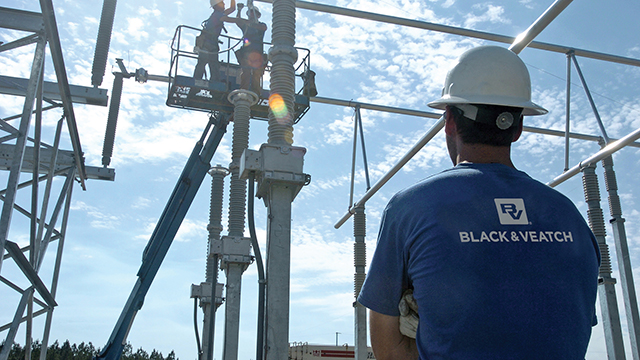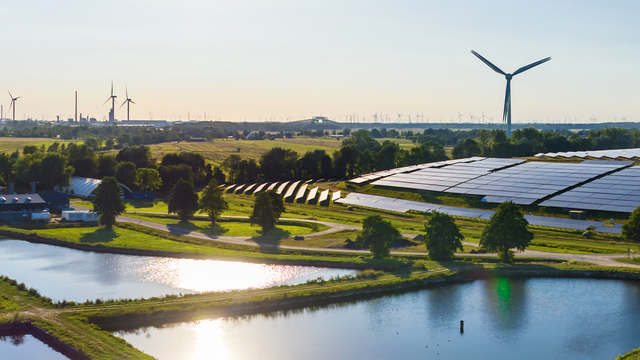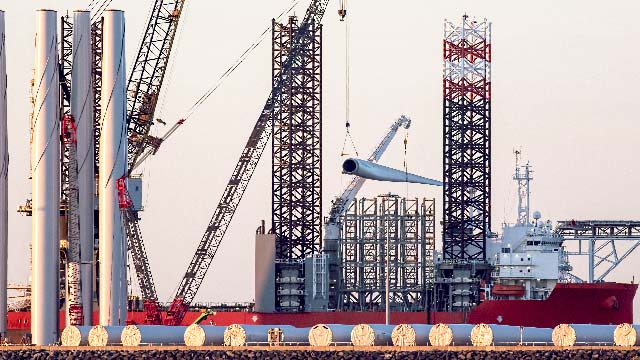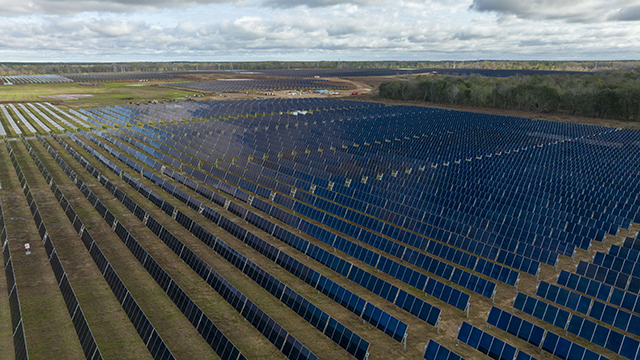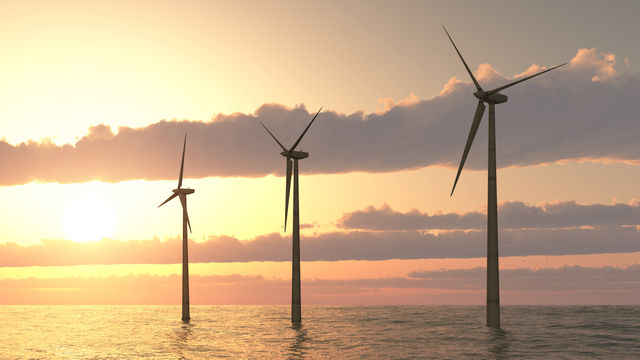Surging growth in renewables and efforts to increase resilience will drive millions of dollars in new transmission investment over the next five years, according to Black & Veatch’s 2019 Strategic Directions: Electric Report survey. Survey results found that 37 percent of respondents see renewables as the top driver in new investment, followed by resilience and reliability (28 percent).
While utilities always will have to spend money to maintain their aging infrastructure, replacing and renewing equipment to keep the lights on, the current influx of renewable energy resources and new technologies are sparking new levels of investment as utilities build out the necessary infrastructure to connect these renewables to the grid.
According to the survey, slightly more than one-quarter of respondents plan to invest up to $50 million to improve transmission and distribution over the next five years; 10 percent plan to allocate between $51 million and $100 million; 18 percent plan to invest between $101 million and $500 million; and one-fifth plan to invest more than $500 million. The remaining 26 percent expect to spend less than $1 million.

Permitting, Return on Equity Remain Barriers
Although utilities and independent entities are gearing up to build out new transmission infrastructure, these development projects are rarely simple to deliver. When asked to identify the biggest barriers to transmission investment today, 40 percent of respondents pointed to siting-permitting processes, followed by evolving return on equity (ROE) and incentive policies (31 percent).

Siting-permitting processes continue to present development obstacles, requiring layers of lengthy reviews and approvals (right-of-way, siting reviews, environmental impact reviews, etc.) at local, state and federal levels. Even when the need for a transmission system is identified through a regional transmission system planning process and approvals are provided at the federal level, state and local jurisdictions can withhold construction permits, slowing — if not impeding altogether — project completion.
The Northern Pass project is an example of one that received a number of approvals from the federal government but was halted at the state level. Sponsored by Eversource Energy and Hydro-Québec, Northern Pass has proposed a nearly 200-mile electricity transmission line project that would deliver 1,090 MW of hydropower from Canada to New England. The project received approvals from the Department of Energy and the Federal Energy Regulatory Commission (FERC), but after nearly a decade of work, it lost its ability to legally proceed when a New Hampshire Site Evaluation Committee denied its construction permit. In May 2019, the project proceeded to the state’s Supreme Court, and a ruling is expected later this year.
Survey respondents identified evolving ROE and incentive policies as the second-largest barrier to investment, and the topic has been a hot button issue for years. FERC’s approach toward incentives is articulated in Order 679 and subsequent policy actions. In March, FERC issued a Notice of Inquiry (NOI) on transmission incentives (PL19-3-000) to reevaluate how the treatment of incentives in the future may be addressed differently. It also opened an inquiry on ROE for electric transmission (PL19-4-000). FERC could make a decision on both NOIs by the end of the year, which would help clarify transmission rate setting policy for incentives and ROE. In the meantime, the industry is monitoring these developments closely.
Energy Storage Changes the Game
Energy storage also is driving potential market shifts. FERC took a significant step forward when it issued Order 841 last year (and Order 841-A recently), which seeks to establish, among other things, a participation model for energy storage in wholesale markets. The order is expected to be implemented by 2020. More than three-quarters of survey respondents (76 percent) expect the order to have a moderate to significant impact on transmission investment needs over the next five years.
By placing energy storage on an equal footing with other forms of generation in the wholesale market, Order 841 will help expand energy storage in the wholesale generation market. When FERC approves compliance plans and related tariff rules are filed by the ISO/RTOs (Integrated System Operator/Regional Transmission Organization), energy storage investors will have a set of rules by which they can participate in wholesale energy markets; in fact, many energy storage investors are now beginning to plan their market entry.
By helping to address the issue of intermittency on the grid introduced by renewable resources, energy storage could improve grid reliability and provide a host of other benefits, such as allowing grid operators to potentially manage greater amounts of renewable energy on the system. These new opportunities, in turn, could spark new investment in energy storage as well as potentially transmission as larger amounts of renewable energy, some connected with energy storage, are added to the grid.
At the time of publication, FERC has not yet ruled on the compliance plans that the ISOs/RTOs filed this spring, but the compliance rulings may arrive as early as this year’s third quarter. Once that happens, utilities and independent merchant power providers will have a new level of certainty as to how energy storage will be valued and treated operationally in the markets, allowing them to further their business-making decisions.
Supporting Investment Through Return on Equity
FERC recognizes that transmission development is, in short, a time-consuming and intensive process that often involves accepting a higher level of investment risk. To combat this challenge, FERC has implemented a series of proverbial “carrots” under Order 679 and subsequent policy, which currently considers several ROE incentives designed to lower transmission investment risk. It should be noted that current transmission incentive policy is under FERC review as outlined above.
When respondents were asked which of the available incentives will be the most important incentive to continue over the next five years, one-quarter of them pointed to the ROE adder for heightened risk. The popularity of this option underscores the fact that transmission investors, placing capital at risk, see this incentive as one preferred way to ameliorate some of the development risk they often face.

Survey respondents identified abandoned plant recovery as the second most important incentive. This incentive offers utilities and/or independent entities who have invested in a regional project the opportunity to recover foregone development costs in their FERC tariff in case the project is abandoned.
Construction work in progress (CWIP) in rate base ranked as the third most important driver. CWIP in rate base offers investors the ability to potentially earn a return on projects that are in progress but not yet complete; this treatment permits investors to earn on investments made during construction (reducing lag in rate recovery) and allows rate base to build more gradually, thereby alleviating “rate shock” that would otherwise potentially occur when the project is placed in service.
Even as these incentives continue to pave the path forward for transmission investment, the treatment of incentives for electric transmission going forward remains under review with the FERC’s NOI open. For example, FERC is considering moving away from its historical approach of case-by-case analysis for incentives. If this occurs, then FERC could adopt a more uniform approach that could benefit transmission investors by allowing them to potentially better anticipate the incentive levels, if any, that they may have the opportunity to earn on future projects.
The Future Rests on Collaboration
Amid shifting market forces and FERC’s ongoing reviews, there is no doubt that change is afoot, but regardless of near-term policy outcomes, electric transmission will continue to remain the backbone of the electric grid and among the principal means of delivering new and clean energy to load. Although tension between federal and state jurisdictions continues to persist in some instances, this tension is not overlooked by policy leaders.
Earlier this year, FERC Chairman Neil Chatterjee said, “The energy landscape in the United States is currently undergoing a dramatic and historic transformation. … In order to shape our policies in a manner that most benefits consumers during this transformative time, it will require collaboration and focus from energy regulators at both the state and federal level.”
”Policymakers at all levels of government,” he continued, “can rally around the improved reliability, greater market efficiencies and better integration of new resources that a robust grid can bring. In this space, we have the opportunity to create the right regulatory environment for the transmission grid of the future.”
What that collaboration may look like may still remain unclear and most likely won’t be resolved easily nor in the near term, but Chatterjee’s words convey optimism and hope that progress is ahead.
By David DesLaurier
David DesLauriers is a director in Black & Veatch’s management consulting business. DesLauriers specializes in cost of service, revenue requirements studies and rate design for stated and formula electric and natural gas transmission rates. He has worked extensively on matters related to wholesale energy markets and Federal Energy Regulatory Commission rate and regulatory matters.
